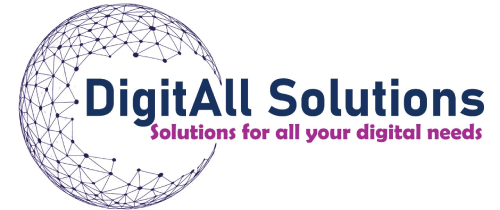The online shopping scene has boomed in recent years. Remember the early days of online giants like Amazon and eBay? The industry has skyrocketed, reaching a mind-blowing $3 trillion in sales! But here’s the real shocker: the online market keeps growing at an impressive 23% each year as per reports. This massive market is brimming with potential, attracting a wave of entrepreneurs eager to jump in with E-commerce Software Development.
Why the surge? It’s simple. How customers shop and what they want keeps changing, and new technology opens exciting doors. In today’s digital world, powerful e-commerce software isn’t just a bonus, it’s essential.
Think of this software as the engine that runs your online store. It quietly handles everything behind the scenes, from managing payments and orders to keeping your stock organized and your shop secure. This guide is your one-stop shop for understanding e-commerce software development. We’ll equip you with the knowledge you need to launch your online business and claim your share of the booming online sales market.
Why Dive into Ecommerce Software Development?
With how people shop always changing, purchasing behaviours, and technological advancements, the creation of web-based commerce software has transitioned from being merely an option to a necessity. Today, establishing a robust online shopping platform offers a gateway to a share of the burgeoning profits within the virtual marketplace. With projections indicating a surge in online marketplaces in the coming years, the time to invest in ecommerce application development is ripe.
Understanding Ecommerce Software Development
Ecommerce software development entails crafting applications that empower online stores to effectively manage their operations. From setting up web storefronts to handling payments, inventory, and customer service, these applications serve as the backbone of digital commerce. Staying abreast of software technologies and trends is paramount in this field, enabling businesses to integrate advanced features such as AI recommendations, AR/VR shopping experiences, and blockchain security, thereby enhancing both user experience and operational efficiency.
Diverse Types of Ecommerce Software
Ecommerce software comes in various forms, each tailored to meet different operational requirements:
1. On-Premises: Hosted within the company’s own data centers, on-premises software necessitates in-house management and maintenance.
2. SaaS (Software as a Service): Ideal for startups and businesses with limited investments, SaaS-based solutions are hosted on third-party IT infrastructure, alleviating the burden of infrastructure management from the company.
Harnessing the Power of Ecommerce Software: Key Functions
Ecommerce software serves as the engine driving backend operations for online stores. Key functions include:
1. Inventory and Product Management: Efficient organisation and cataloguing of products, including low-stock alerts.
2. Order and Customer Management: Handling of customer orders, checkout processes, and customer information.
3. Taxes and Shipping Automation: Automating tasks related to shipping, tax calculation, and label printing.
4. Enhancing Customer Experience: Facilitating seamless navigation and quick product discovery for customers.
5. Streamlining Marketing: Incorporating SEO features to enhance visibility and boost sales.
Essential Features for Ecommerce Software Development
When developing ecommerce software, certain features are indispensable:
1. Automation: Streamlining the checkout process and automating pricing, taxes, and shipping calculations.
2. Search Functionality: Enabling customers to easily find products through robust search filters.
3. Website Builder: Providing prebuilt templates for website creation.
4. Centralised Data Management: Ensuring easy storage, retrieval, and access to product and customer information.
5. Reporting and Analytics: Offering insights into trends and patterns to optimise services.
6. Integration: Facilitating seamless integration with third-party services for accounting, payments, and order fulfilment.
The Inner Workings for your Ecommerce Business
Ecommerce software simplifies the online purchasing process by executing a series of backend tasks:
1. Customer browses products on the site.
2. Customer creates an account and adds products to the cart.
3. Secure checkout process utilising SSL encryption.
4. Utilisation of third-party services for shipping and delivery.
5. Payment information securely transmitted to the processor.
6. Order completion with payment details stored securely.
Estimating Ecommerce Software Development Costs
The cost of ecommerce software development varies based on several factors:
1. Type of Software: Costs differ for web development, mobile app development, and Minimum Viable Product (MVP) creation.
2. Complexity: More features, customisations, and integrations increase development costs.
3. Development Team: Location of the development team influences costs, with rates varying globally.
In conclusion, embarking on ecommerce software development offers a gateway to tapping into the lucrative digital marketplace. By understanding the nuances of development, leveraging essential features, and estimating costs effectively, entrepreneurs can embark on this journey with confidence, poised for success in the dynamic world of ecommerce.
Don’t Blast Off Alone: Find Your E-commerce Software Partner
The online marketplace is a crowded space, and a stellar online store is your launchpad to success. That’s where DigitAll Solutions comes in. We’re your expert partner in crafting e-commerce software that stands out. Imagine software that perfectly reflects your brand and resonates with your audience. We don’t just build software, we build success stories. Our team uses cutting-edge technology and platforms like Shopify and Magento to create online retail experiences that drive growth.




